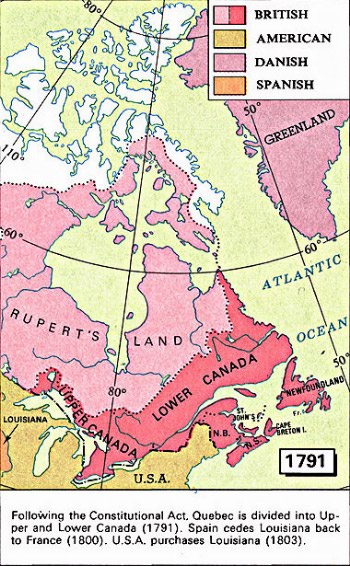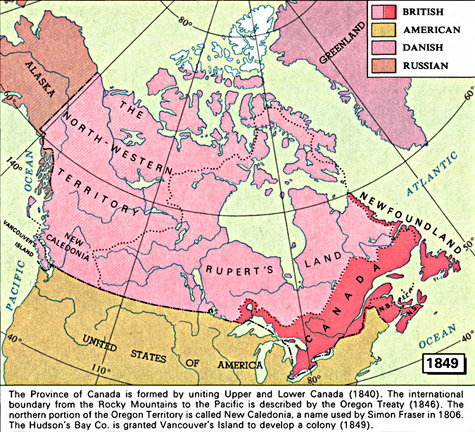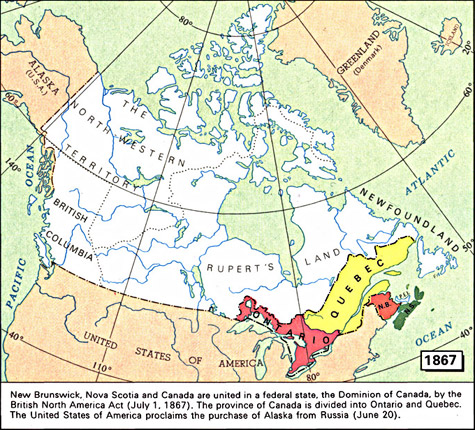
By Milkessa M. Gemechu (PhD) @milkessam
Addis Abeba – Ever since Abiy Ahmed became prime minister of Ethiopia in 2018, there have been attempts to depict his political beliefs, rules, program, and party as tools of Oromoness (hereafter Oromummaa). As a result, some have already reached the extreme of comparing Oromummaa with Nazification. I will argue in this article that all of these efforts are untrue and unfounded. They had a couple of aims when they formulate this misinforming framing.
First, they were trying to associate Abiy’s rule as an Oromummaa tool thereby neutralizing Oromo national self-determination struggles. That’s to tell the Oromo that they do not have legitimate questions and demands anymore. Their second mission was to advance the long-established hatred and phobia of the Oromo people (they had a derogatory name for the Oromo). They know that there is no Oromo without Oromummaa or Oromo identity. By attacking Oromoness, they look backward to deny historical wrongs that the previous rulers of Ethiopia committed against non-Amharic speaking nationalities in Ethiopia and then intend to restore Amharization disguised as Ethiopianization.
I will explain these in detail. Before I examine Prime Minister Abiy’s political program of subjugating Oromummaa through his medemer and Prosperity Party political apps, an informed discussion of the concept of Oromummaa is in order.
“Oromummaa is a broader concept that is explained by the totality of Oromo culture. It is much deeper and more complex than we might think”
In the 1960s, the concept of Ethiopia and who constitutes Ethiopian was at the center of ‘the nationalities question’ as formulated by Ethiopian Student Movement leaders such as Ibsa Gutema, Walelign Mekonen, Muhe Abdo, and others. At the time, Ethiopianess, in terms of language, music, way of life, dressing, politics, and religion was equated with Amharaness (and to some extent Amhara-Tigrawayness) (see Walelign Mekonen). Due to the whole process of state formation and the subsequent “nation-building” project in Ethiopia, and the resulting resistance it faced from the conquered nationalities, Donald Levine summed the whole political process as “Amhara thesis”, “Oromo anti-thesis” and “Ethiopian synthesis”. Levine’s formulation was criticized only for narrowly defining it from the two major national groups. Nostalgic of historical attempts of building an “Amharic speaking one-nation”, a section of Ethiopianist elites continues to advance an anti-Oromo envisaged Ethiopia.
Recently, the concept of Oromummaa has resurfaced becoming the target for both supporters and opponents of Prime Minister Abiy Ahmed’s rule. Thus, it is important, at this juncture, that we all have a full picture of what Oromummaa is and what it is not. I am not a social anthropologist. I write as an Oromo person and scholar of political science.
Understanding Oromummaa
Oromummaa is a broader concept that is explained by the totality of Oromo culture. It is much deeper and more complex than we might think. It is explained in terms of cultural stuff (norms, values, traditions, arts, beliefs), languages, history, jiruuf-jireenya (work and life), worldview/philosophy, democratic rules, symbolism and identity, territory, and socially integrating the needy persons through moggasa/guddifacha (adoption by consent).
“Oromummaa, derived from the name Oromo, refers to all those elements that constitute the Oromo personality. […]. In short, ‘Oromoness’ is composed of the totality of the Oromo culture” (Gemechu Megersa, 1996: p.92). Oromo traditions provide the basics of Oromumma. There is no nation without its own history. Oromo is an ancient people in Northeast Africa. Oromummaa is built on the knowledge of the history of the Oromo.
Oromo traditions: There are traditions that nurture Oromummaa from childhood. Hibbo (riddle) is played by youths before bed; it is a mental exercise and development strategy. Knowledge of mammaaksa (Oromo proverbs) is critical. In the Oromo tradition, “mammaaksi dubbii fixuuf ykn dubbii fiduuf” (proverbs either end or begin a disagreement) is part of the day-to-day activity of the Oromo society. Oromo elders begin discussions and conclude them with mammaaksa. One of the targets of the Ethiopian state-led assimilation policy was this mammaaksa and its usage, making generations forget their own and adopt the nationally prescribed Amharic ones. Such strategies of weakening the aspect of Oromummaa have always been subtle.
Moggaasa maqaa: A newly born baby should get a name, and it must be approved by an appropriate traditional institution. Giving names to newly born babies or adopted ones is not an arbitrary phenomenon. There is a procedure to follow. Systematic renaming of communities, individuals, and territories was part of the Amharic-based forced assimilation policy of Ethiopia to weaken Oromummaa. Names such as Milkessa were cursed as an “un-Ethiopian” name. All non-Amharic names in Ethiopia were discriminated against and seen as backward names until 1991.
“Afaan Oromoo (Oromo language), above all, is a carrier of all cultural stuff. Language is not a mere means of communication for Oromo”
Oromo arts and literary traditions characterize Oromummaa. All music and arts carry messages and cultural values that they want to inculcate in the minds of the listeners. So, Oromo music and arts transmit Oromummaa. Oromo songs praise Oromo history, love for the Oromo nation, resistance, culture, hero/heroine [geerarsa], marriage, nature, cattle, education, children (urursu), etc. These all are the foundation of Oromummaa.
Afaan Oromoo (Oromo language), above all, is a carrier of all cultural stuff. Language is not a mere means of communication for Oromo. It carries the cultural values of the nation and transfers them from generation to generation. A people without their own language is only half a nation, as linguists put it. When they kill your language, they are trying to kill your cultural connections and thereby your very national identity (Oromummaa). That is why language became the key target of assimilation policies of “nation-builders” in Africa or elsewhere. ‘Nation-building’ in this regard is ‘nation-destroying’ (see Walker Connor). Retaining Amharic as the only working language of the federal government of Ethiopia favors cultures associated with Amharic but marginalizes those non-Amharic speaking peoples and cultures from the center.
The Oromo people, being the single largest national group in Ethiopia constituting well over 40% of the Ethiopia population, have been denied to use its language, Afaan Oromoo at the federal level. Since the creation of modern Ethiopia in the last quarter of the nineteenth century, Amharic remains the sole working language of the central government and of Addis Ababa city administration, where the majority of the country’s businesses and finances circulate. Prime Minister Abiy came to power in 2018 but he did not want to revise the constitution of the country to incorporate Afaan Oromoo as the second working language. He is even unwilling to revise the Addis Ababa charter to include Afaan Oromoo as the other working language of the city. Amharic only official language has been the instrument of Amharaization disguised as Ethiopianization. The struggle for language rights in Ethiopia did not come to an end.
One can become an Oromo in two ways. One is to be born Oromo. The other is ‘to become’ Oromo. Paul Baxter calls it “being and becoming Oromo.” In the latter, non-Oromos can become Oromo once they pass through strictly legal and cultural procedures called moggaasa/guddifachaa(adoption). Moggaasa/guddifachaa are modes of adoption by consent of the adoptees who would be granted economic and political rights in the Oromo democracy (Gadaa system). One can stop the adoption processes at the medhacha stage and retain his/her/their language and community and have access to land and economy, but this could compromise their full political rights in Oromo. Full adoption renders full citizenship. One must be clear that adoption in Oromo society is fully dependent upon the consent of the adoptees. This is similar to citizenship in liberal nations. There has never been forced/compulsory adoption in the Gadaa system. Because the adoptees are attracted by the economic benefits and the democratic nature of the egalitarian Gadaa system, it was a free enterprise. Once fully adopted, one can run for Abba Gadaa posts. Note that such a socially integrative approach worked well during the well-functioning of the Gadaa system. Once the Gadaa system started to weaken due to the Oromo’s subjugation by Abyssinian forces, the becoming aspect of Oromummaa got corrupted and abused.
Oromummaa and Oromo philosophy: Oromummaa is distinguished with “core common cultural values and modes of thought” (Baxter, 1985:1). Oromo philosophy is an African philosophy that is distinct from other philosophies. Oromo life is largely a collective life just as in other African societies. The land belongs to the Oromo branches (moieties). Individualism is less common in Oromo philosophy. Be it good or bad, in Oromo society, you just share things in common including accountabilities. For example, for a crime, an individual committed, his/her clan is collectively accountable. Oromo shares South Africa’s Ubuntu philosophy of “I am because we are.” Oromummaa is rooted in Oromo worldviews.
Political aspects of Oromummaa: Oromo society is a democratic and open society, which has roots in the Gadaa system. Power is transferred from one party to the next democratically. There are five political parties (Gogeessa Gadaa) in Oromo among which power rotates every eight years. Each term of office is fixed to eight years. One party can’t rule beyond an eight-year term. No re-election. No power is gained through the barrel of the gun. No son has ever killed his father for power. No soldier has taken state power. This is the diametrical opposite of power politics in the Abyssinian kingdom, where the son kills his father to inherit power. Gadaa democracy is an amazing well-founded egalitarian system. The political aspect of Oromummaa is built on this democratic political culture and aspires to restore this weakened civilization. Honesty and trustworthiness are the basis of Gadaa politics.
Oromummaa is tied to Oromo land. Mountains and rivers have traditional ritual and non-ritual functions in Oromo society. Oromo’s jiruuf-jireenya (work and life) is tied to its land as the society is largely agrarian. Oromoland is called Oromia. “Biyya abbaa koo ykn Harmee Oromiya,” [my fatherland or mother Oromia] is a powerful territorial Oromummaa identity. Extended families inherit land from their forefathers. “Yaa Oromo qulqullu qonneet nyaanna lafan gurgurru” (the pure Oromo, we plough the land and feed, we don’t sell it) was a popular Oromo protest song against the infamous 2014 master plan of Finfinne.
Oromummaa had also a belief system dimension (now become cultural values of the society). Before the Oromo accept the dominant religions of the world, they use to worship one Waaqaa (God) as a monotheist society. Dhugaan ilma Waaqi (truth is the son of God) is still one of the founding principles of Safuu (ethics), which is found at the center of Oromummaa. You can’t deceive, or lie because it is a violation of Safuu. Oromummaa is God obeying act, hence built by the God-fearing society of Oromo. Irreechaa (thanksgiving) festival, celebrated twice a year, is part of Oromummaa. It is yet to be formally recognized as a national holiday put on the national calendar of Ethiopia.
In conclusion, Oromummaa is all about the Oromo people. And Oromo is Oromummaa. There is no Oromo without Oromummaa. Attacking one is attacking the other. Ever since it was conquered and subjugated by Abyssinian rulers, the Oromo has been struggling to regain its natural self-government rights.
“Prime Minister Abiy’s medemer political thinking and program was developed as an anti-thesis to Oromo nationalism”
Now, the question is which policies, programs, laws, and actions of Prime Minister Abiy Ahmed promote Oromummaa? Is he establishing an egalitarian democratic Gadaa system in Ethiopia? In the first place, does Abiy’s rule have an element of democracy by any standard? Which part of the Oromummaa we discussed above is sponsored by the government of Abiy? I would rather argue that Abiy’s rule practically evolved to the opposite of Oromummaa.
Prime Minister Abiy’s medemer political thinking and program was developed as an anti-thesis to Oromo nationalism. He has repeatedly announced that Oromo nationalism is the opposite of his patriotism enshrined in his political ideology of Prosperity Party (PP): “We, Prosperities, are patriots. We are not ethnonationalists… If you are an Oromo nationalist, your nationalism is founded on belittling Amhara, Gurage, and others.” From this, I don’t see any basic difference between Abiy’s deliberate misinformation about Oromummaa and those who advance Oromophobia.
In reality, Oromo nationalism is a force of democracy, it struggles for national self-government rights. It struggles for proportional democratic representation at the federal level including the official language question. Similar to other democratic forces in Ethiopia, Oromo nationalists fight against dictators in order to restore democratic elections and human rights protections. Demanding justice is often seen by oppressors as belittling brothers and sisters. Oppressors will always fear discussing their historical wrongs! Both Abiy and his Ethiopianist opponents equally demonize and advance misinformation against Oromummaa.
Abiy has consciously chosen the Ethiopianist camps that promote homogenization policy by misrecognizing identities, histories, and languages of national groups in the country. Abiy was able to appeal to this exclusionist group by adopting their historical narratives, which glorify the history of Abyssinia backed by building statutes of Amhara elite praised kings such as Menelik and Haileselassie in his palace. This was the exact period when Abiy lost Oromo nationalist support which caused the 2018 change, and gained Ethiopianist camps. His merger with Ethiopianist camps was cemented when he introduced medemer ideology and created his PP.
“Misinforming the international community as if Abiy is an Oromummaa government does not help solve the problems of Ethiopia”
All would recall that Ethiopianists and Amhara nationalists supported medemer and PP, and Oromo nationalists were the first to oppose and start resisting. Ethiopianists supported Abiy’s medemer because the latter was about the “Ethiopia-First” ideology which vows to dismantle all political institutions created on “ethnic” identity in the country. Thus, PP’s political program does not recognize the sacred self-determination rights that were fought for and enshrined in the constitution of Ethiopia.
Government-funded Ethiopian Policy Institute announced on May 16, 2023, that it has conducted studies that recommend revisions of the constitutional self-determination clauses and the status of Addis Ababa cities. The Oromo nationalists have been fighting for the implementation of those clauses, not amendments. The conflict that began in 2019 against Oromummaa and the struggles to defend it in Oromia got worsened when it reached Tigray in November 2020. The past five years’ political and security crises in Oromia are associated with Abiy’s dream of subjugating Oromummaa. Medemer and the creation of PP have never been among the questions of the Oromo. With the creation of the PP, Abiy was able to directly assign/remove regional state officials through party channels. The Oromo national questions were undermined by Abiy. So, Abiy’s dictatorial rule has no positive relationship with Oromummaa.
However, by taking lessons from his predecessors, Abiy Ahmed seems to have chosen to instrumentalize some Oromo and non-Oromo military generals to materialize his political dreams. King Menelik’s chief general Ras Gobana, an Oromo himself, was instrumental in subjugating the Oromo people into the empire of Ethiopia during the 1880s. King Haileselassie was also keen to use Oromo military architects such as Habtegiorgis Dinagde (Abba Mala) and other non-Amhara troops to impose Amharic-speaking rule over the multitude of conquered peoples. The Derg also effectively used Oromo and Amhara generals to implement what it called the “Ethiopia-First” ideology, which was Amharic-based military rule, assimilation policy, and anti-self-rule policy. Similarly, Abiy could use Oromo and non-Oromo military generals to meet his political dream of becoming a dictator.
For that matter, Abiy has largely used Amhara regional forces to invade Tigray. Abiy will continue to use all means and forces to establish his authoritarian rule. Therefore, misinforming the international community as if Abiy is an Oromummaa government does not help solve the problems of Ethiopia. Such confusion could instead help Abiy. Abiy advances a political program that is an anti-thesis to regional self-rule. So, Abiy’s political system is an antithesis of Oromummaa. The solution lies in the unity of all oppressed national groups against dictatorship and the joint struggle for a democratic multinational Ethiopia.
Editor’s Note: Milkessa M. Gemechu (PhD) is a visiting assistant professor of political science at Albion College in the US. He was member of the Prosperity Party until August 2020 and served as a senior He can be reached at mgemechu@albion.edu



